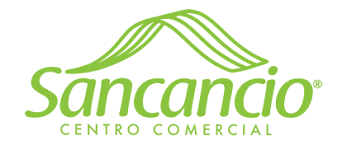Varicose blood vessels are a typical condition that impacts millions of people worldwide. They are inflamed and twisted capillaries that usually appear on the legs and can cause discomfort, pain, and cosmetic worries. This short article aims to offer a thorough understanding of varicose veins, including their causes, signs, and offered therapy choices.
Sources Of Varicose Veins
Varicose veins occur when the valves in the capillaries breakdown, resulting in blood merging and the veins coming to be bigger and twisted. Several factors add to the advancement of varicose veins:
1. Family members Background: Genetics plays a significant role in varicose blood vessels. If your moms and dads or close family members have actually had varicose capillaries, there is a higher opportunity that you might establish them also.
2. Age: The risk of varicose blood vessels increases with age. As people get older, depanten krem the capillaries lose their flexibility, making them a lot more prone to damage and obstructions.
3. Sex: Females are more likely to establish varicose capillaries than guys. Hormone changes while pregnant, menopause, and the use of hormonal birth control can contribute to the condition.
4. Weight problems: Being obese or overweight places additional stress on the blood vessels, making them much more vulnerable to ending up being varicose.
5. Long Term Standing or Resting: Jobs or activities that call for extended periods of standing or sitting can raise the danger of creating varicose veins.
- Occupations such as nursing, training, and factory work typically include long term durations of standing, placing pressure on the capillaries.
- Sitting for extended durations, specifically with crossed legs, can influence blood flow and contribute to the advancement of varicose blood vessels.
6. Deep Capillary Apoplexy (DVT): A background of deep capillary thrombosis, a blood clot in the deep veins of the legs, can enhance the likelihood of developing varicose blood vessels.
Signs of Varicose Veins
Varicose blood vessels can offer numerous signs, consisting of:
1. Visible Blood vessels: The most apparent sign of varicose blood vessels is the noticeable look of twisted, bulging veins on the legs.
2. Discomfort and Discomfort: Lots of people with varicose veins experience pain, heaviness, or hurting in the influenced areas. This pain may intensify after long term periods of standing or resting.
3. Swelling and Edema: Varicose blood vessels can trigger swelling in the legs and ankle joints due to inadequate blood circulation.
4. Skin Adjustments: The skin around varicose blood vessels might become stained, completely dry, and itchy. In some cases, the skin can become slim and conveniently wounded.
5. Difficulties: In severe instances, varicose capillaries can cause difficulties such as ulcers, blood loss, and embolism.
Therapy Options for Varicose Veins
Fortunately, numerous therapy options are readily available to handle varicose veins. The option of treatment depends on the severity of the problem and private choices:
- 1. Way of living Alterations: Ensuring way of life adjustments can aid minimize signs and symptoms and avoid the worsening of varicose capillaries.
- Keeping a healthy weight, exercising routinely, raising optiheart cena the legs, and preventing long term sitting or standing can promote far better blood flow.
2. Compression Panty hose: Compression stockings are particularly designed to use pressure to the legs, boosting blood flow and minimizing signs and symptoms.
3. Sclerotherapy: This non-surgical therapy involves injecting a remedy straight right into the affected blood vessels, causing them to collapse and fade gradually.
4. Laser Therapy: Laser treatment uses light power to warm and destroy the damaged blood vessels, slowly fading them away.
5. Endovenous Ablation: This minimally invasive treatment entails putting a catheter right into the influenced vein and utilizing radiofrequency or laser power to close it off.
6. Blood vessel Stripping: In more severe instances, medical elimination of the influenced capillaries might be essential. This procedure is called vein removing.
Preventing Varicose Veins
While varicose capillaries might not be completely avoidable, certain measures can lower the danger of developing them:
- Routine Workout: Engaging in normal exercise, such as strolling or swimming, can boost blood circulation and strengthen leg muscle mass.
- Preserving a Healthy And Balanced Weight: Maintaining a healthy and balanced body weight decreases the strain on the blood vessels.
- Staying Clear Of Extended Sitting or Standing: Taking breaks and moving routinely can aid prevent blood merging in the legs.
- Raising the Legs: Raising the legs over heart level for brief periods can aid enhance blood circulation.
- Wearing Compression Panty Hose: Compression stockings can offer support to the capillaries and lower the risk of establishing varicose blood vessels.
Final thought
Varicose capillaries are a common condition that can create discomfort and impact the quality of life for numerous people. Comprehending the reasons, symptoms, and readily available treatment options is important in managing and preventing the development of varicose veins. By embracing a healthy lifestyle, seeking proper medical treatments, and taking safety nets, individuals can successfully manage varicose blood vessels and reduce their impact on every day life.

Leave a Reply